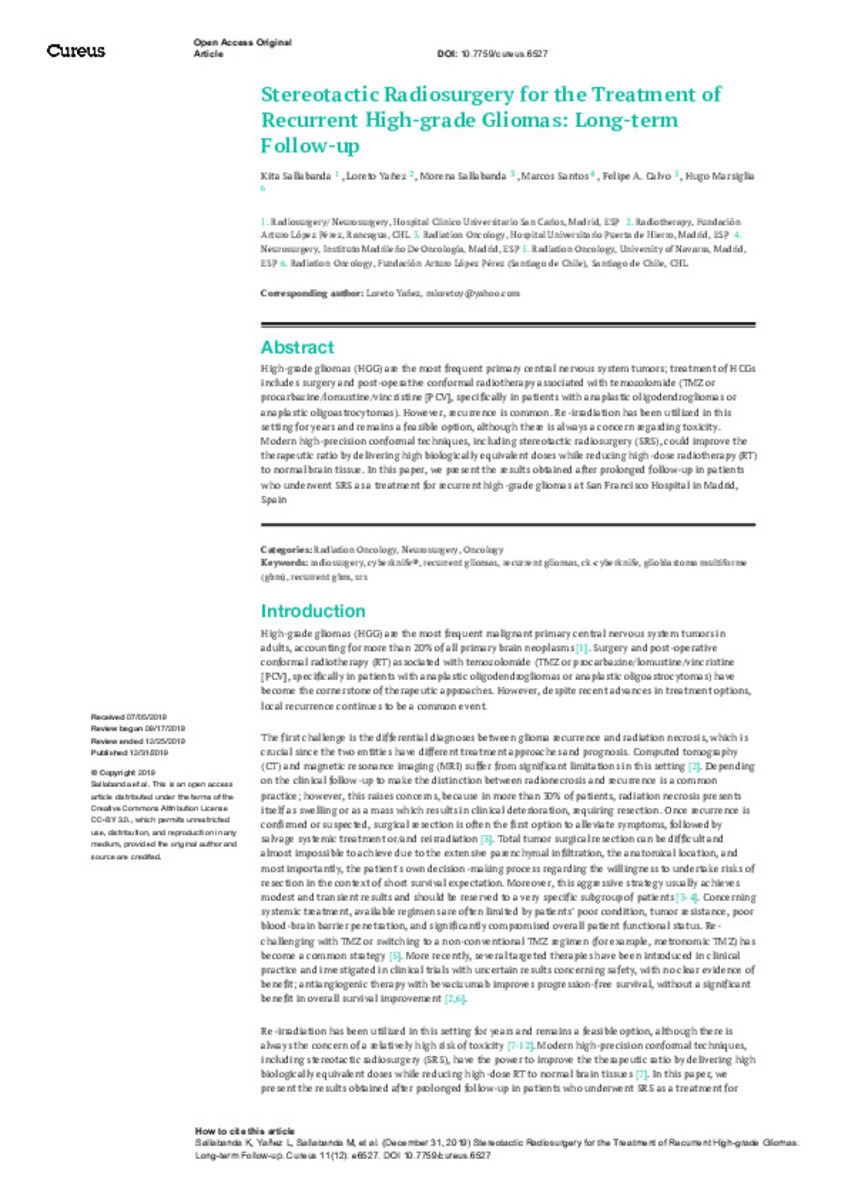Stereotactic radiosurgery for the treatment of recurrent high-grade gliomas: long-term follow-up
Palabras clave :
Radiosurgery
Cyberknife®
Recurrent gliomas
Ck-cyberknife
Glioblastoma multiforme (gbm)
Recurrent gbm
Srs
Fecha de publicación :
2019
Nota:
This is an open access
article distributed under the terms of the
Creative Commons Attribution License
CC-BY 3.0., which permits unrestricted
use, distribution, and reproduction in any
medium, provided the original author and
source are credited.
Cita:
Sallabanda, K. (Kita); Yañez, L. (Loreto); Sallabanda, M. (Morena); et al. "Stereotactic radiosurgery for the treatment of recurrent high-grade gliomas: long-term follow-up". Cureus. 11 (12), 2019, e6527
Aparece en las colecciones:
Estadísticas e impacto
0 citas en

0 citas en

Los ítems de Dadun están protegidos por copyright, con todos los derechos reservados, a menos que se indique lo contrario.







